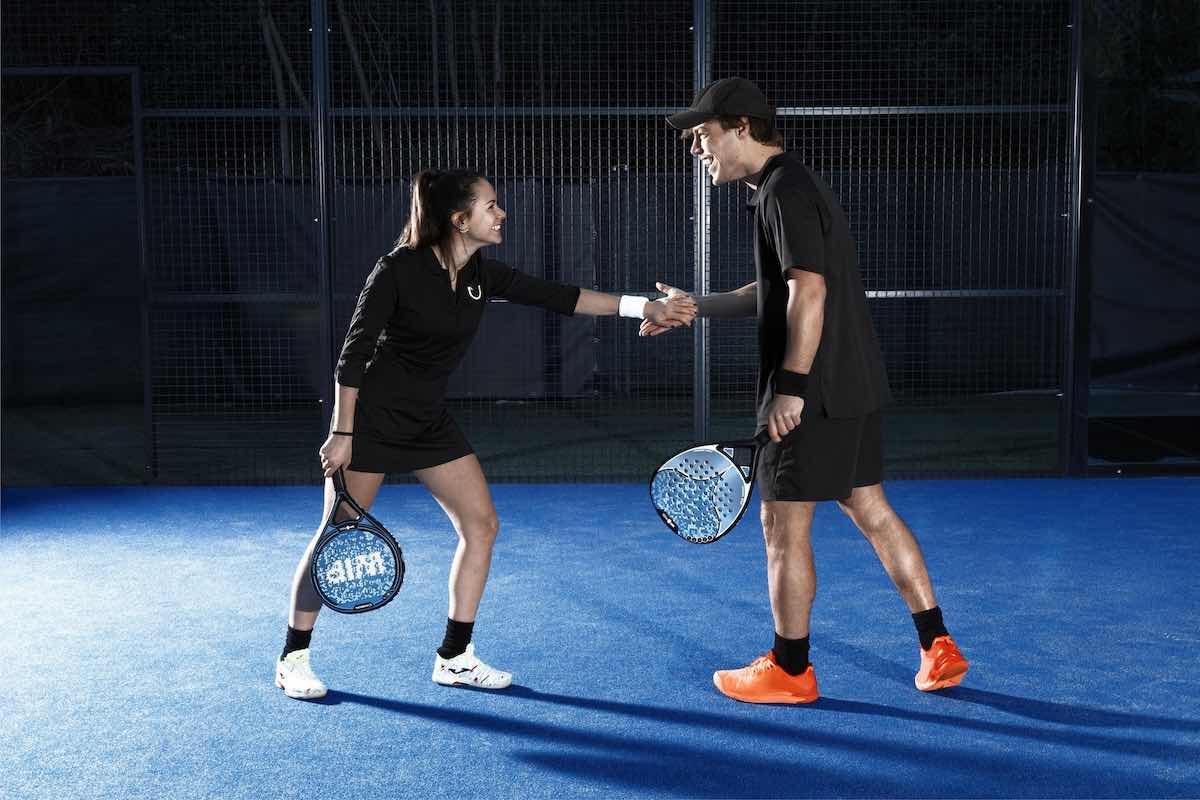Knowing your side on the padel court is detrimental to determining whether you play aggressively or defensively.
Most players who play padel encounter common problems on which side they should play. Is it the left-hand side and left shoulder? Or the right-arm side and right shoulder?
If I’m left-handed, should I always play on the right side allowing my forehand and bandeja to be towards the middle?
If you want to learn more about which side of the court you “should” play, read on!
Some general guidelines and principles of Padel
To better know what side is “your best” when you’re playing padel, it’s important that you understand the general rules and regulations, as well as its scoring system.
Do a refresher below if nothing else:
- It is considered a fault when the ball hits the wire fencing while landing in the service line. However, you can still get a second serve, like in tennis.
- Before hitting the ball, the server must allow the ball to bounce once. According to the rules, the ball must be hit at waist level.
- The server must not touch the service line before the serve.
- Before you serve, you must keep at least one foot from the ground before hitting the serve.
- It is allowed even if the ball hits the center of the service box.
- The server’s feet shouldn’t cross or touch the service box during the service.
- It is a good serve regardless of whether the ball hits the back or side wall after it bounces from the service box and net. The opposing player should play it.
- It’s a fault when the ball bounces onto the service box and the wire fencing.
- Before the match starts, a coin is tossed. The winner is given the option to choose what side of the court they’ll start or to serve first.
- After the serve, if the ball hits the net, lands on the service box, and hits either side of the wall, it’s considered a let. The serve must be replayed.
What’s In
According to the International Padel Federation (PadelFIP), the following rules are allowed:
- During the initial serve, the lines are considered in play.
- Otherwise, they differ from each point’s deciding factors during the match.
- Players can play the ball off any of the walls that they prefer on their side (walls, not fence).
What’s Out
- Your opponent gets the point if the ball strikes your partner or yourself while in play.
- The opposition wins a point when the ball bounces twice on any side of your court after going over the net.
- Your opponents get the point if the ball hits the walls or the fences after going over the net.
- Your opponents get the point if the ball hits any fixture, wire fencing, or posts before landing on the opponent’s court.
Playing on the Right side
Left-handed players are often situated on the right side of the court. One good reason left-handed players are preferred on the right side of the court is that they can smash and volley as it will be their forehand side.
It is the same concept a right-handed player plays when they’re on the left-hand side of the court.
However, beginners will often need help with how to position themselves on the court, and one reason is that it can be a little bit tricky to do a backhand service return if you’re just a beginner.
In addition, players who play on the right will often set the point on the left to finish.
Playing on the Left side
Right-handed players are always on the left-hand side. However, there are certain factors to consider if a padel player can play on the left-hand side rather than on the other side.
In such cases, the padel player with a great return serve should be on the left side.
Differences between the Left and Right Sides when you play at the back
There’s a little difference between playing on both sides if you’re positioned at the back.
However, right-handed players often have a distinct advantage when playing at the back and can generate quick points if played effectively.
They can use their forehand to return service when the ball hits the wall. This can be a good start for beginners.
Tactical differences of playing volleys on the right vs. left side
Because playing in the right position doesn’t allow a player to be more aggressive or take powerful shots, it is better to be more methodical about your position and the shots you take.
What we recommend is to play and control the direction of the ball and precise movement.
This way, you can place the balls on your opponent’s court at an angle where they will have a harder time returning your balls.
We suggest setting up your volleys to force your opponents to hit the ball weakly.
You don’t give them an easy ball to hit as it may be hard to return and may result in a quick point for them.
As a result, your partner will have a smoother time returning, be more aggressive, and get the score in the process.
What to do if your best hand is the same
If both players are right-handed, it may be difficult for one player to adjust and change sides.
To avoid this problem, the player with a better backhand is given the right-hand side of the court because they are positioned near the middle, allowing forehand shots.
However, changing sides might be best if the padel player on the right has a terrible shot during the whole set.
It would be better to try things out to win the game efficiently. Refrain from trying to force the issue, or you’ll start losing games here and there.
Conclusion
If you’re watching the World Padel Tour, it’s not the ideal tutorial to determine what side you will be playing.
In general, most top pairs on the tour have one left-handed, and one right-handed player, meaning both players can play an attacking forehand position down the middle (Bela/Coello being the top pair with such clear roles).
You need to understand the general game and positions to know more about what side you’re better at.
We recommend not choosing your side right away while learning the sport; adapting both sides will benefit both you, your partner, and your team!
FAQ – Which side should I play in Padel
You and your partner should decide this before the match starts. In some instances, the padel player with a better aerial game should play on the side where it would be best for them to take the shot down the center or perform a bandeja.
Playing on the right-hand side of the court is important for lefty players. This way, your smash generates enough power while being defensive on that side of the court. A lefty player can also make safe shots in the middle of the court than in corners or on the left side.
It is very similar to both players being right-handed. The player with the best attacking game will play forehand (in the lefty case, the right side) in order to maximize your chances of winning.
If you want to know what side is your “good side,” then it would require playing a couple of games on a consistent basis and trying out both sides. As mentioned, it is important to play both sides of the court early in your career.

Lucas Sánchez is the founder of SimplePadel. Born and raised in Spain, Lucas has been living in the US and UK for the last 20 years and currently calls Miami his home. While he’s never played professionally, the dream is still alive.
Lucas loves nothing more than playing (and talking) about padel, and he considers himself lucky to have a wife and family that share his love for the game.

5 replies on “Which side should I play in Padel”
[…] receiving pair will decide if they receive the service on the left side or right side of the court. But, they aren’t allowed to change position to receive the golden […]
[…] These will also determine how you can maximize and cover the court. It also allows you to move effectively with your teammate and defend your side of the court. […]
[…] The new Adidas Adipower CTRL 3.1 is one of the best all-around rackets in 2022. It’s all about maximizing control. Endorsed by professional WPT player Alex Ruiz, a left-handed player who plays right side. […]
[…] What side should I play in Padel? […]
[…] The half-volley is done using the backhand and forehand. To create a backhand volley, you must wait for the ball to impact the ground and blow it with your backhand side. […]